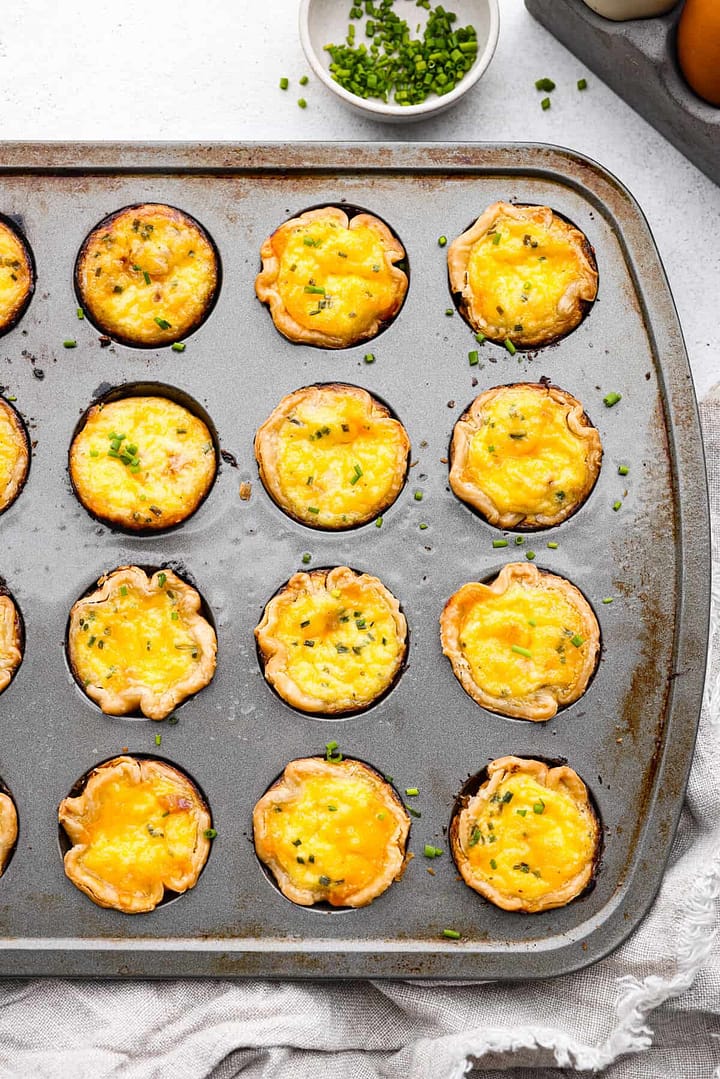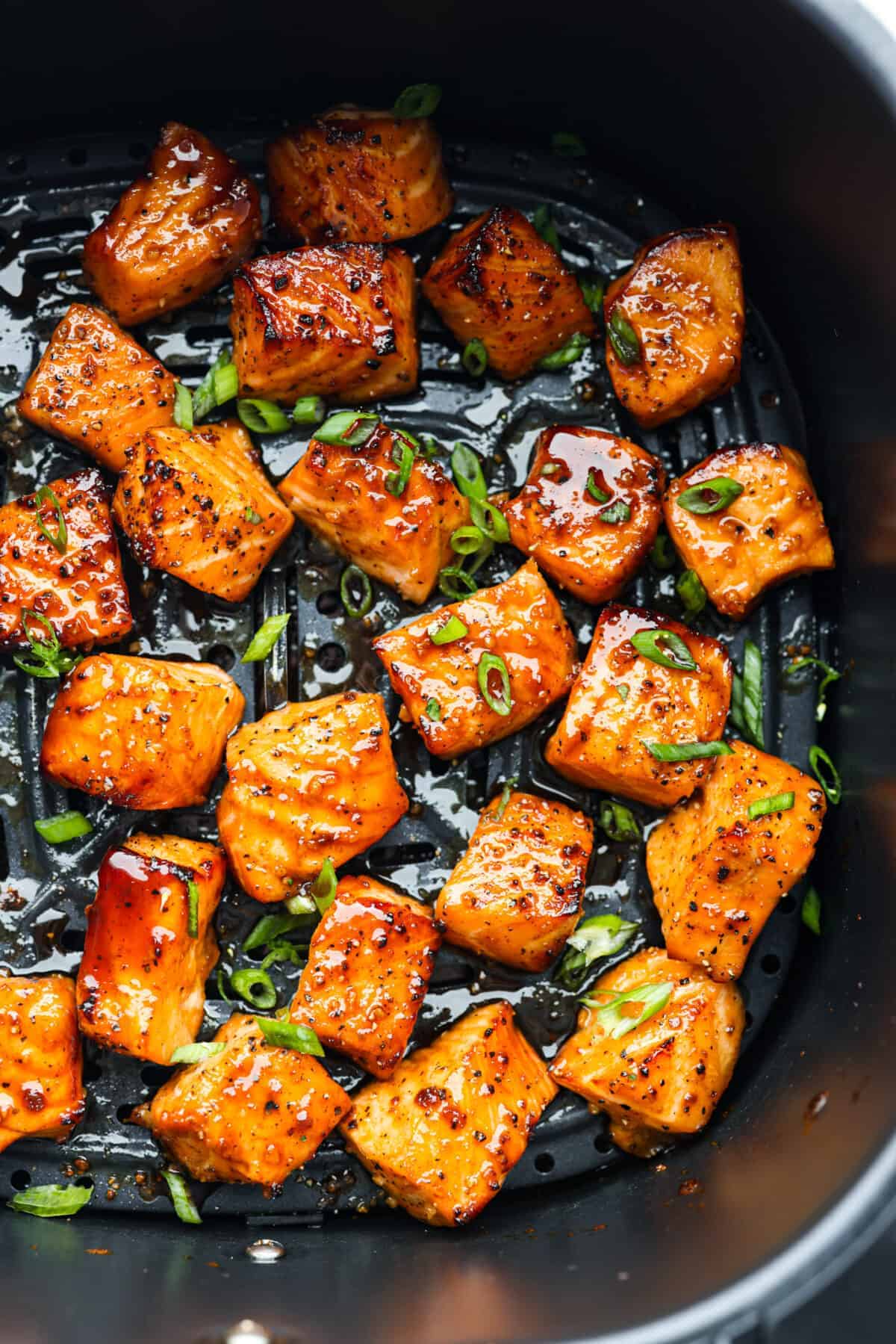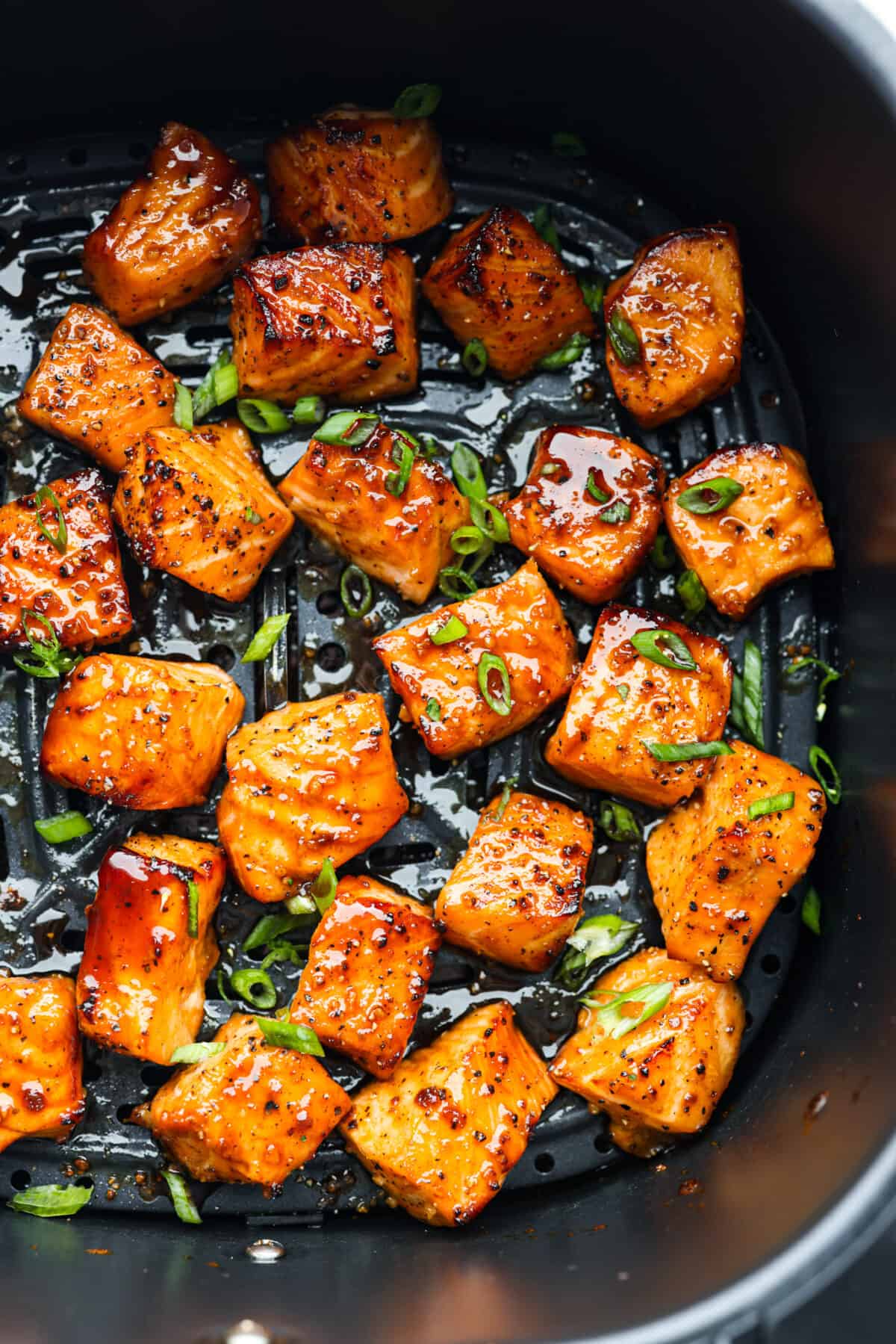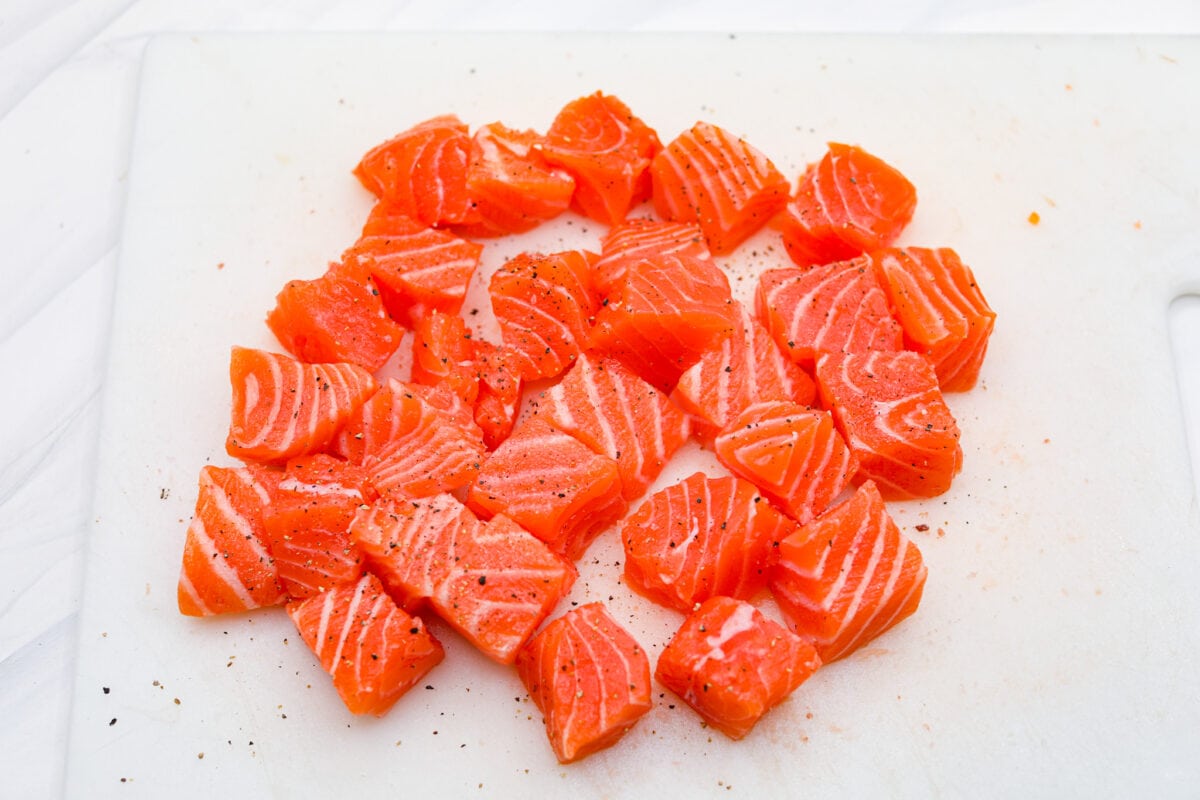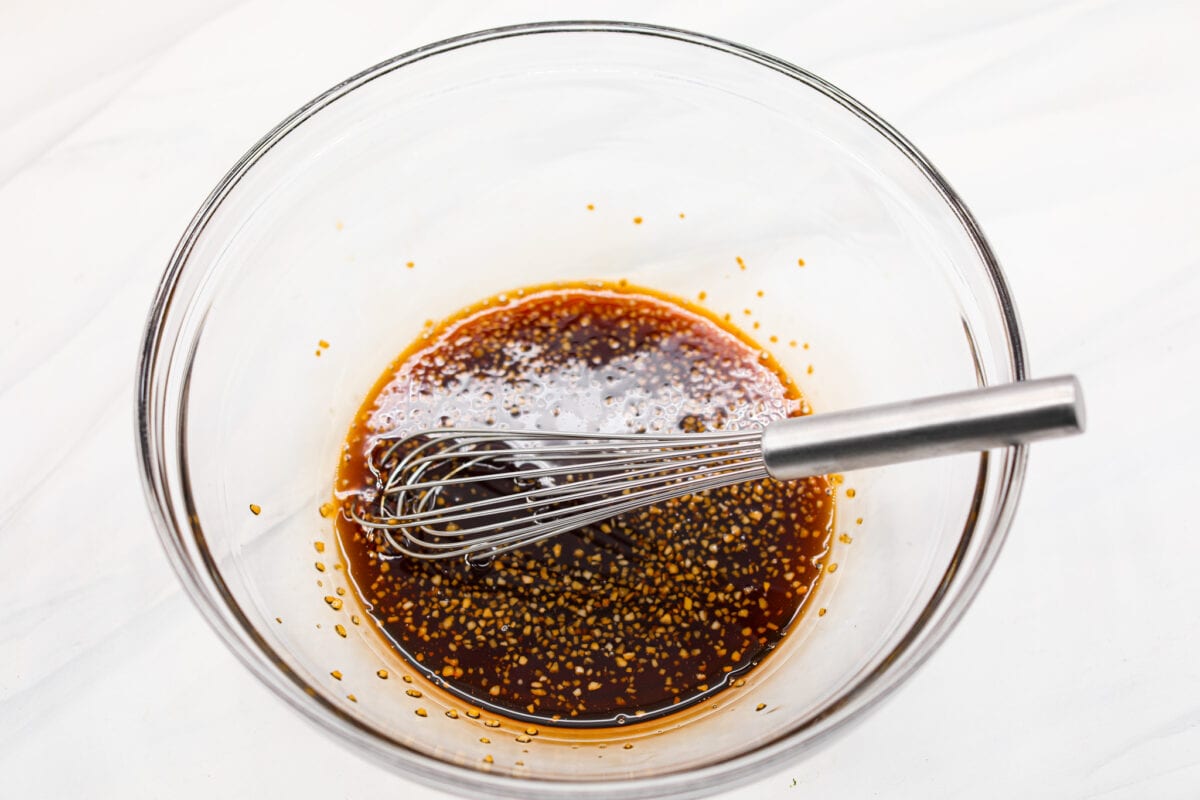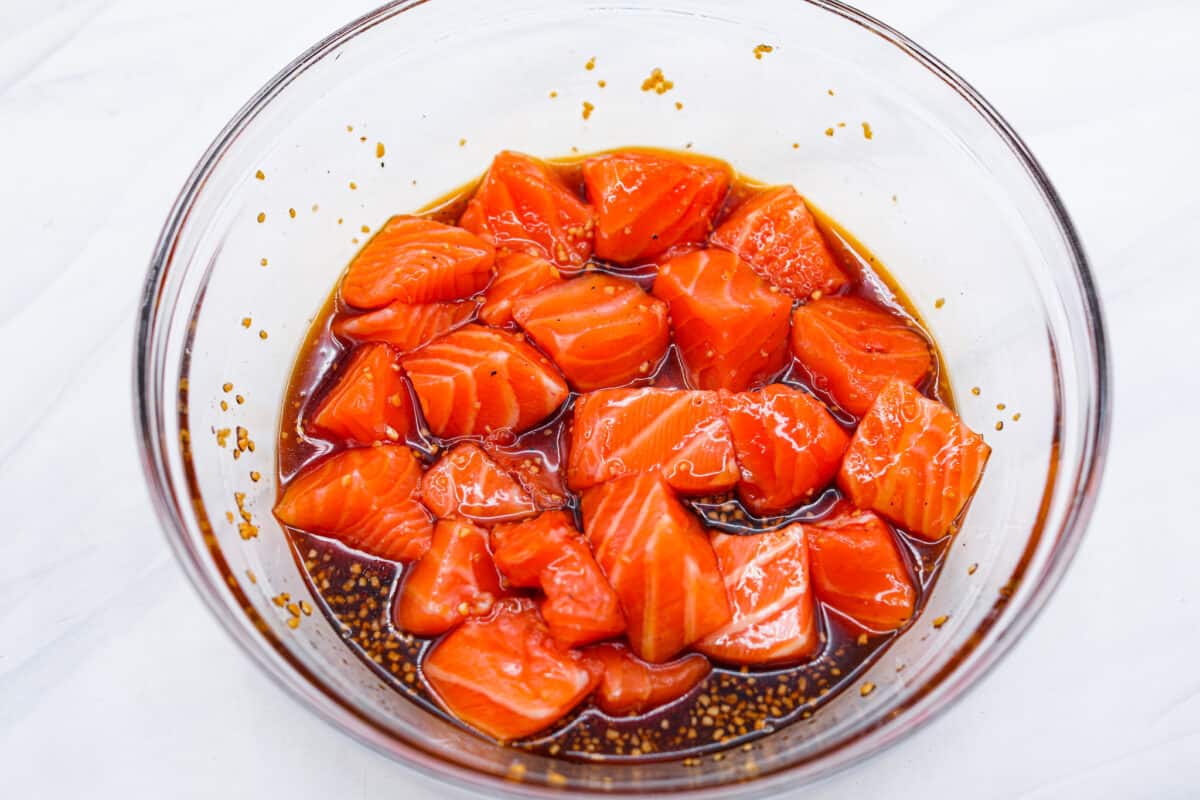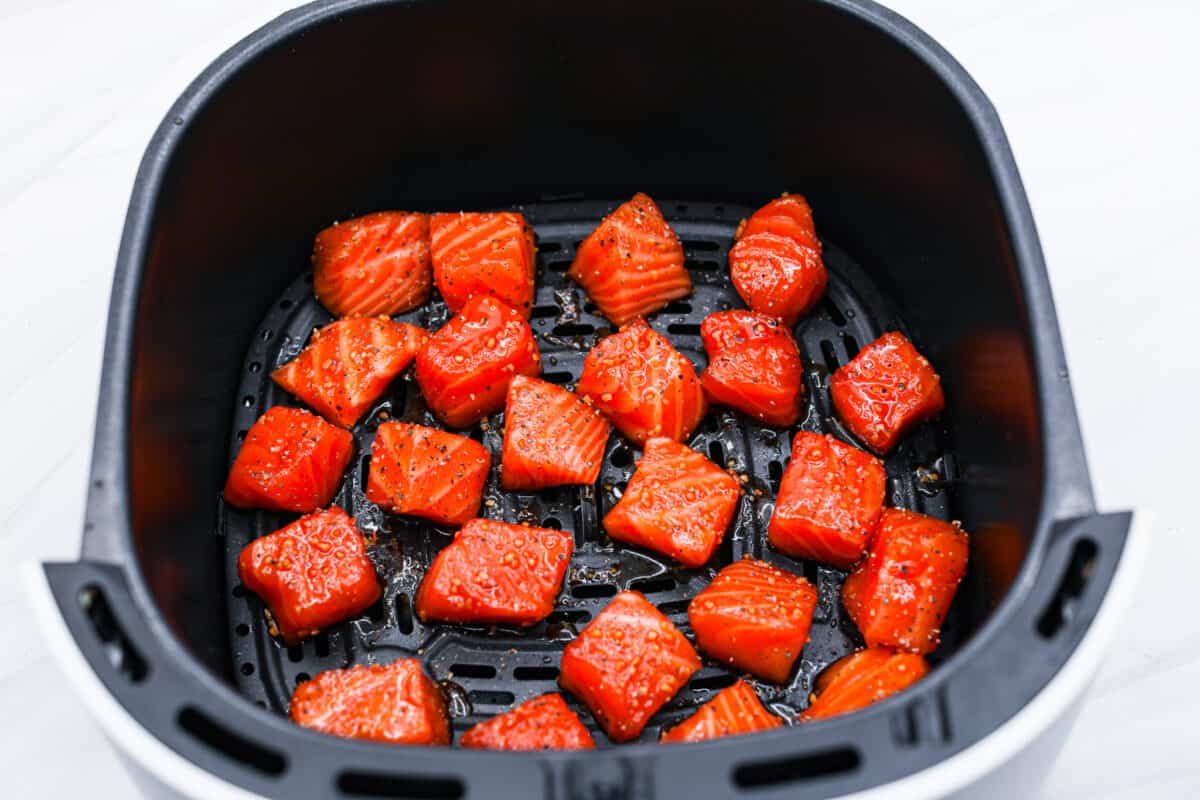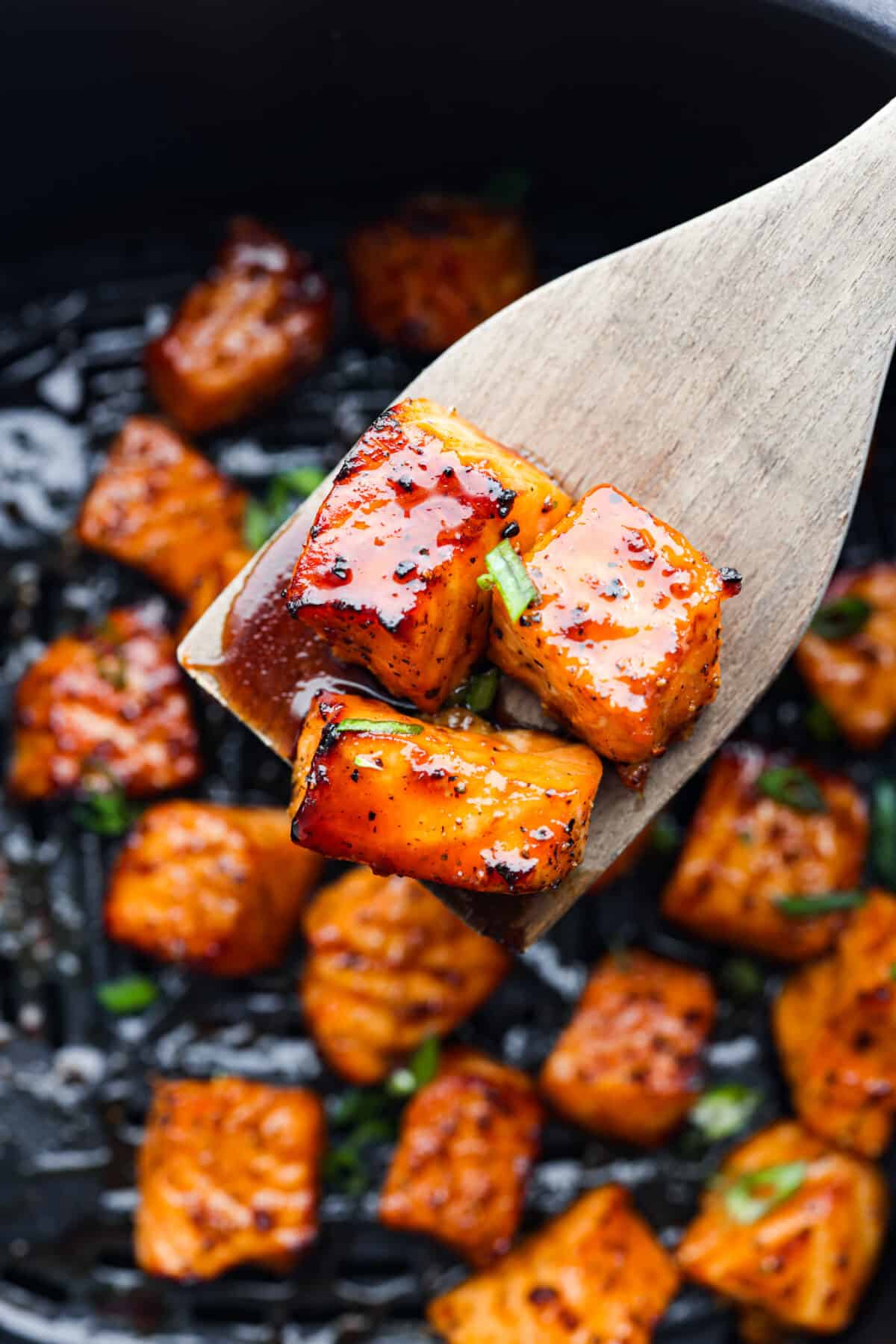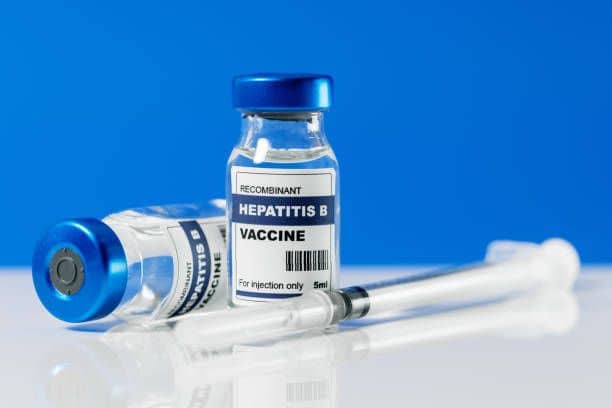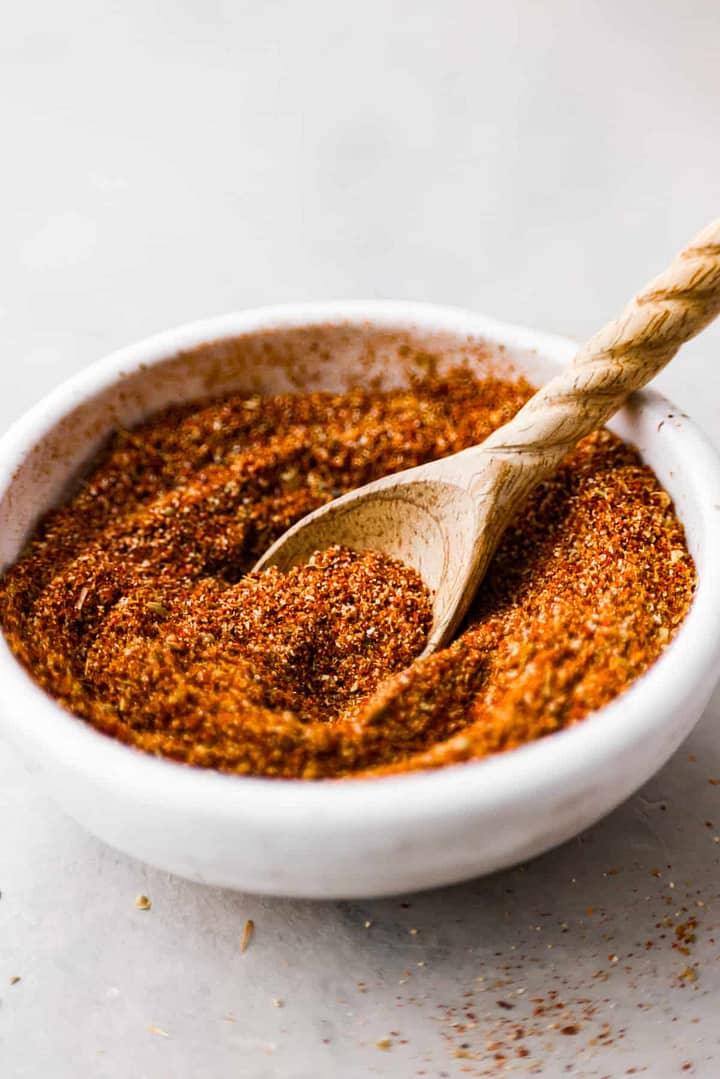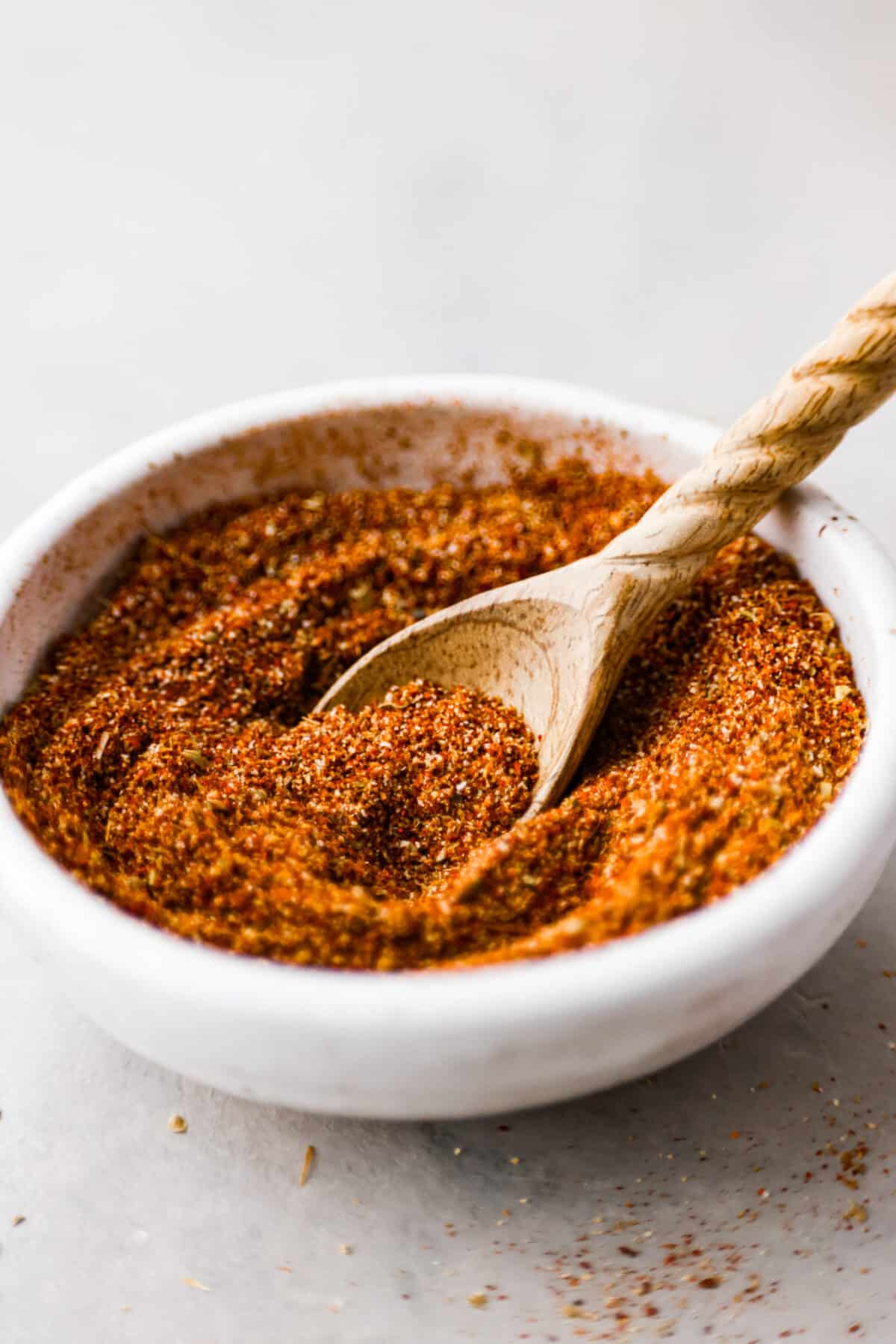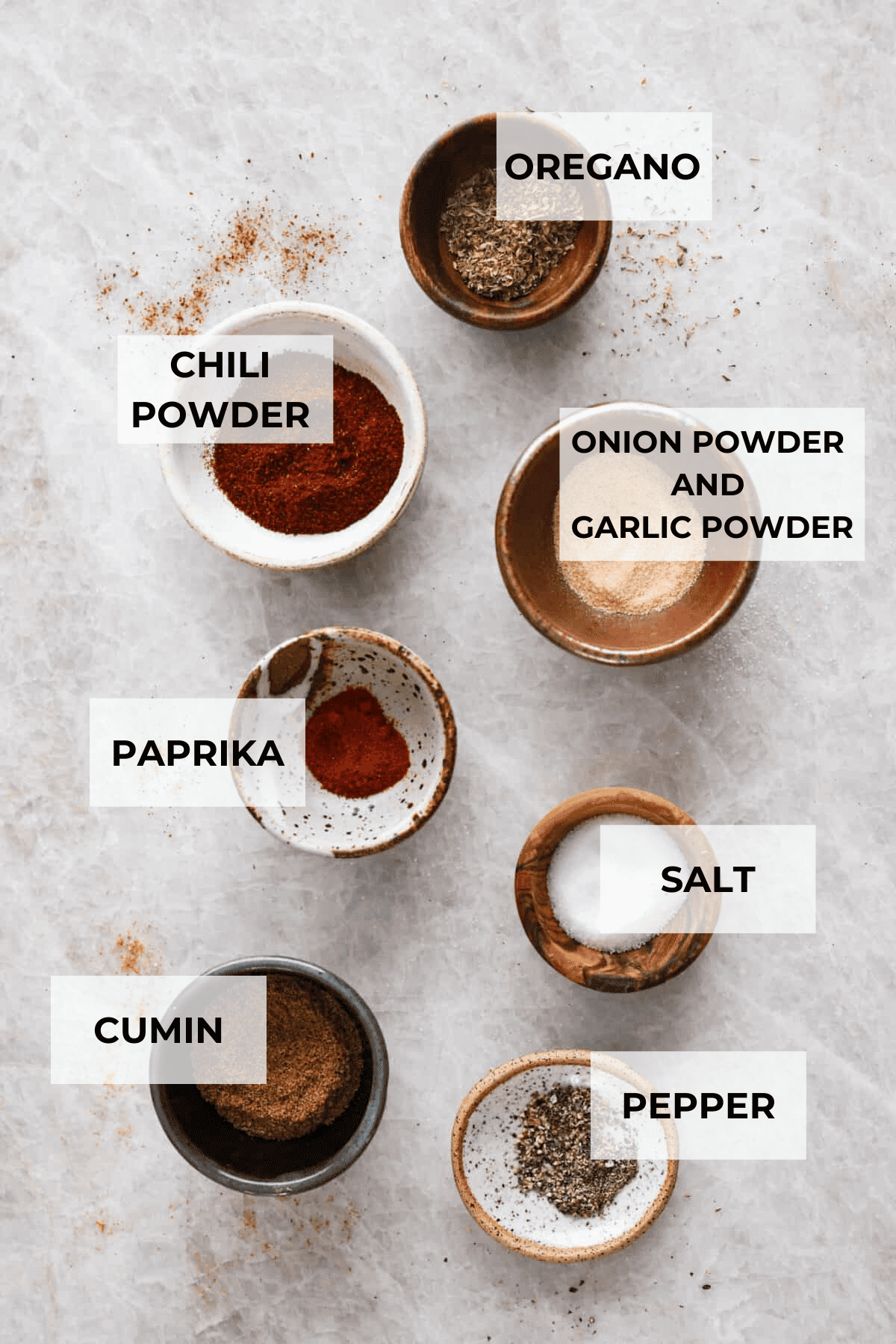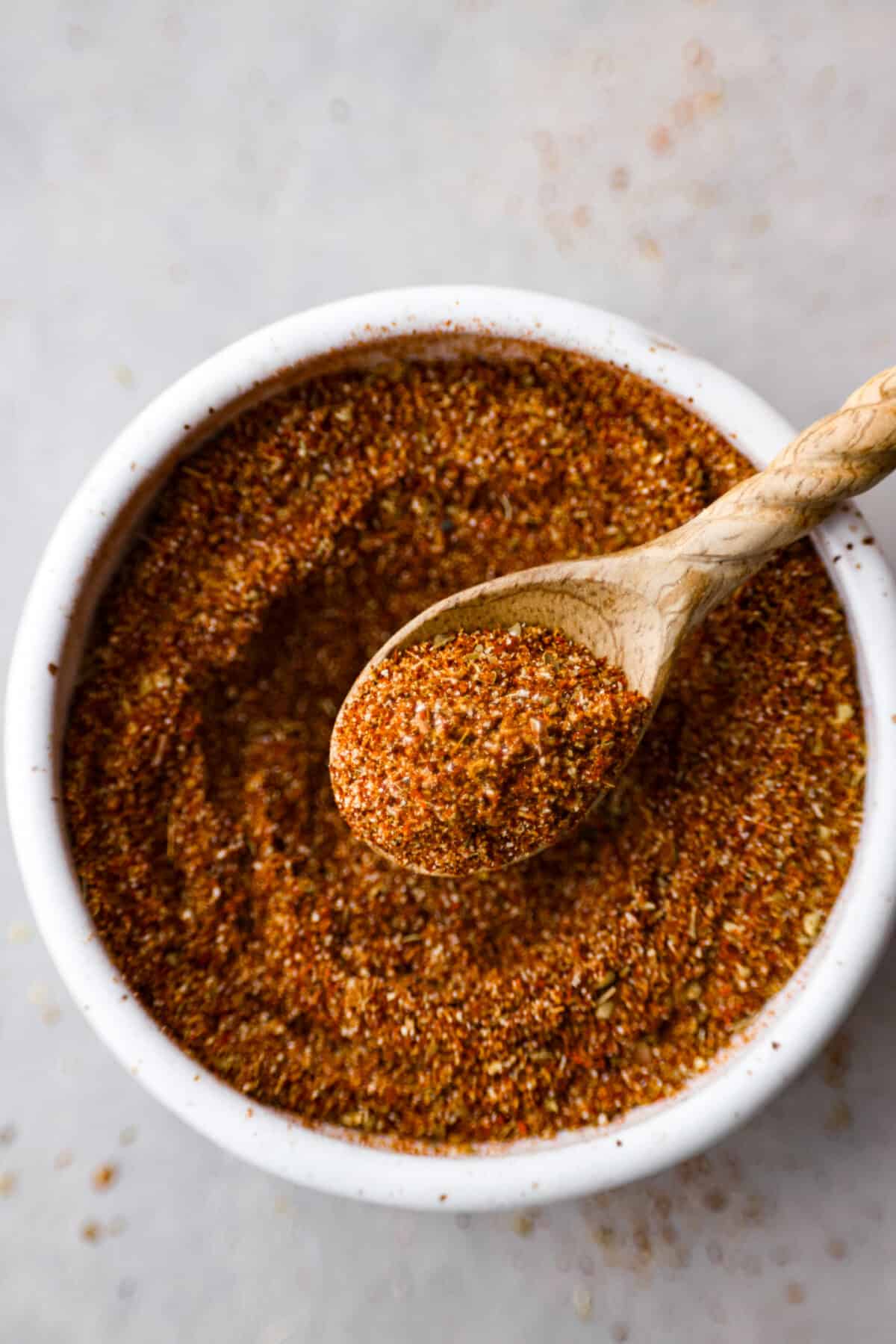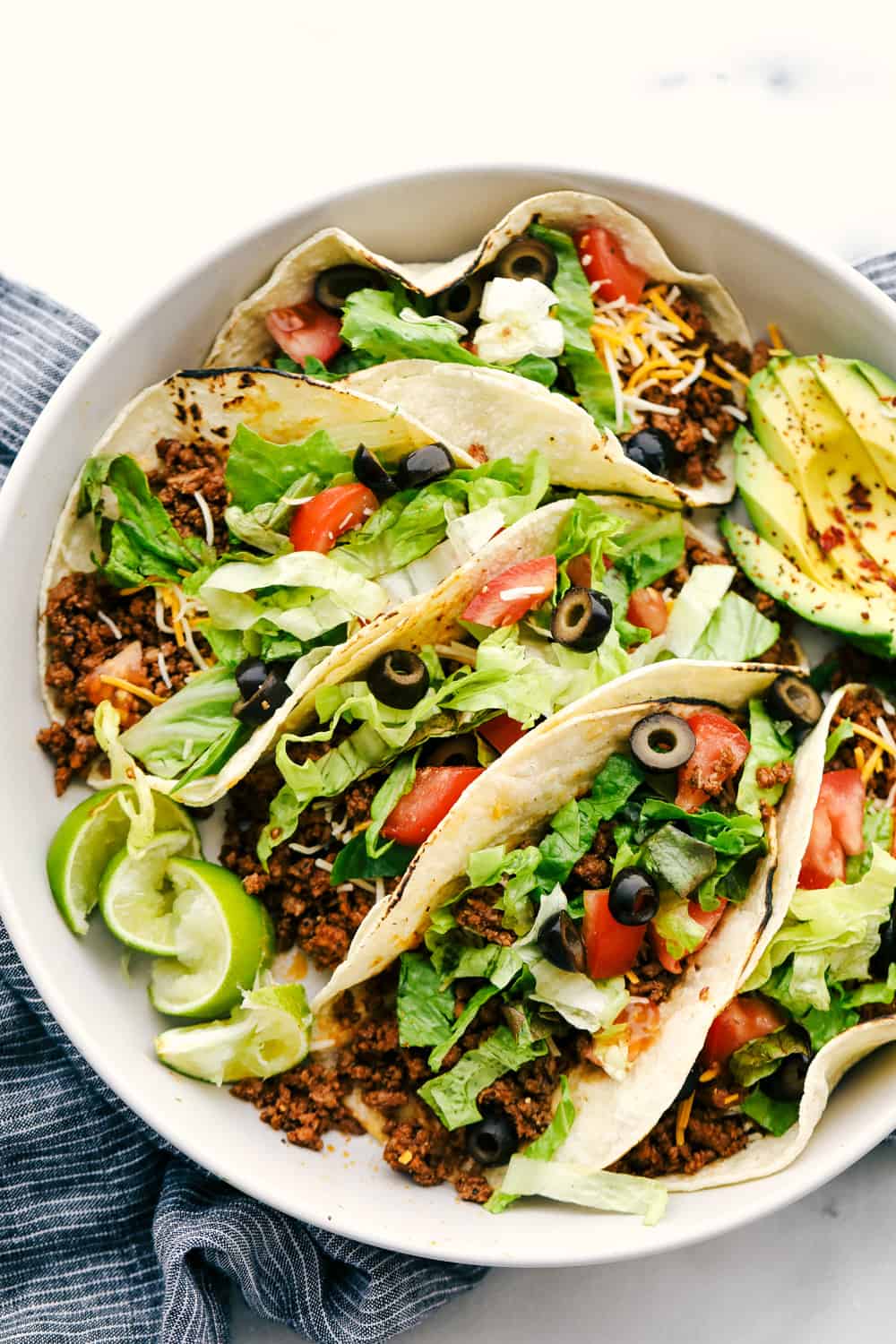This website may contain affiliate links and advertising so that we can provide recipes to you. Read my disclosure policy.
Bite-sized Mini Quiche are always a hit, and they’re so easy to make! A creamy, flavorful ham and cheese egg filling bakes in a flaky pie crust for the most wonderful melt-in-your-mouth brunch treat. Serve these as hors d’oeuvres, a grab-and-go breakfast or a perfectly portioned snack and watch them disappear!
These mini quiches are so fun, but we love a full-sized quiche too! They’re versatile, great for making ahead of time and always super filling. Try this tasty Ham and Cheese Quiche, this simple, yet delicious Asparagus Quiche, or this Cheesy Zucchini Quiche next!

Mini Quiche Recipe
Delectable mini quiche bites with a fluffy egg texture and flaky, buttery crust are always on the menu if I’m hosting a special brunch! Whether for Easter, baby showers, bridal showers or Christmas morning these are everyone’s favorite appetizer. They’re also great for lunch or dinner with some simple sides. Plus, they’re completely customizable! You can change up the recipe and use bacon instead of ham, or make them vegetarian by replacing the meat with sautéed veggies.
Quiche cups look so elegant and fancy that you may think they’re complicated to make, but they are actually so easy. Use a premade crust, and these only require about 20 minutes of prep. They keep for days and even freeze well, so you can make them in advance to enjoy throughout the week, or have them ready-to-go ahead of an event or holiday gathering. Pair your mini quiche with our quick 45-minute cinnamon rolls, a fruit salad and muffins or mini pancakes for a complete brunch spread!
Ingredients Needed
You only need a handful of simple ingredients for this mini quiche recipe. You probably already have most of them in your kitchen! Check out the recipe card at the bottom of the post for exact measurements.
- Pie Crust: To make this recipe hassle-free, use a store-bought pie crust. However, if you’d rather make a homemade one, my grandma’s pie crust recipe is the best.
- Cheese: If you have the time, shred your cheese from a block for better flavor and melting. Any cheese works well, but we really like the taste of cheddar cheese in this recipe.
- Ham: Use any cooked ham from your local grocery store, even deli ham works.
- Chives: Adds a pop of color and freshness.
- Eggs: You will need 3 room temperature eggs for this recipe. I always use large grade A eggs in my recipes.
- Cream and Milk: A combination of heavy cream and whole milk will make the egg filling perfectly rich and creamy.
- Salt & Black Pepper: Use salt and ground black pepper to bring out all of the fantastic flavors in these mini quiche.
How to Make Mini Quiche
These cute bites are really easy to prep. Cut out the crust and whip up the egg mixture, then the rest of the time is spent cooking in the oven! Your family and friends will adore this fun (and incredibly scrumptious) poppable breakfast option!
- Prep: Preheat the oven to 350 degrees Fahrenheit and spray a 24-count mini muffin pan with pan spray.
- Make the Crust: Cut 24 2-inch circles from the pie crust, gathering the scraps and rolling it out again as needed to get all 24. Carefully press the pie crust circles into each well of the muffin pan. Don’t press them too hard, or they will be difficult to release. Also, be careful to not puncture the dough or your quiche will leak. Place the pan in the refrigerator to chill while you prepare the quiche mixture and add-ins.
- Combine the Filling: In a medium bowl, use a whisk or an immersion blender to combine the eggs, cream, milk, salt, and pepper. Transfer to a large liquid measuring cup for easy pouring. You may also use a small ladle to fill the little wells, but a measuring cup is easier.
Assemble and Bake
- Fill the Crusts: Remove the muffin pan from the refrigerator and add a little bit of each add-in filling to each of the wells. Fill the wells to the brim of the pie crust with the quiche mixture.
- Bake: Place in the oven and bake for 30-35 minutes, until the edges of the pastry are beginning to brown. Once they are done, remove them from the oven and let them cool for 5-10 minutes. While they are still warm, carefully remove them from the pan. Your mini quiche should come out fairly easily, but if the egg mixture leaked at all, running the tip of a small paring knife around the edge can help loosen the quiche from the pan.
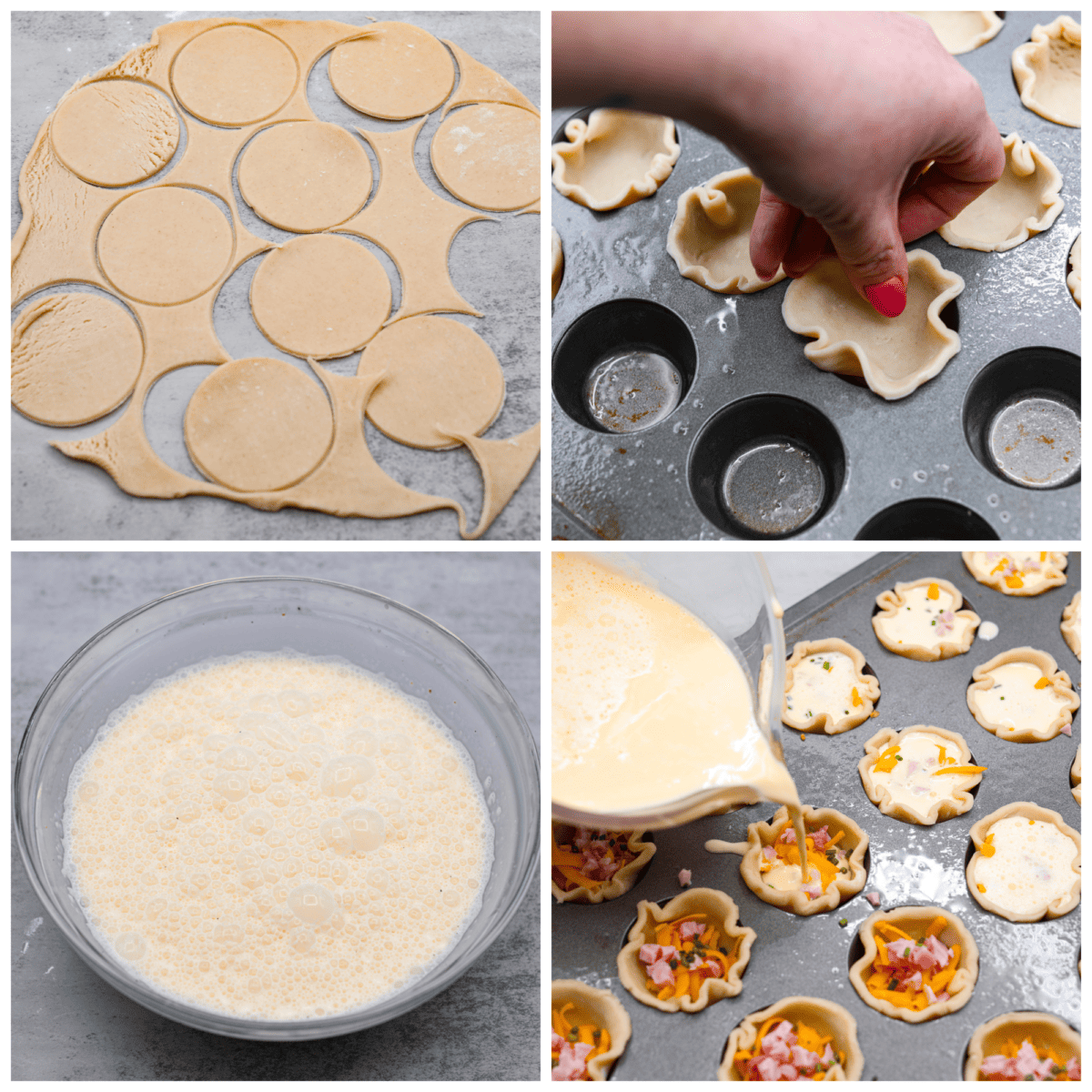
Tips & Variations
Here are a few helpful tips and ways to change up the recipe, so you can make these tasty little quiches just how you like them!
- Different Add-ins: You don’t have to stick with cheese, ham, and chives for the add-ins! Use about 1 ½ cups of whatever filling you would like, just make sure it is chopped up well so it fits in the mini muffin tins. Some ideas would be bell peppers, onions, crumbled sausage, sauteed mushrooms, spinach (cooked and well-drained), or crumbled bacon.
- Crust Dough: Make sure you don’t press the pie dough too hard against the muffin pan. The dough can stick and be hard to release if it is pressed in too much.
- Less Mess: To make it easy to pour the egg mixture into the mini crusts, consider mixing it in a mixing bowl with a pour spout or a large liquid measuring cup.
- Crustless Quiche: If you’d prefer your mini quiche without the crust, spray your muffin pan with cooking spray and fill the cups with the egg filling. These won’t need to bake as long, so start checking on them after about 20 to 30 minutes of baking.
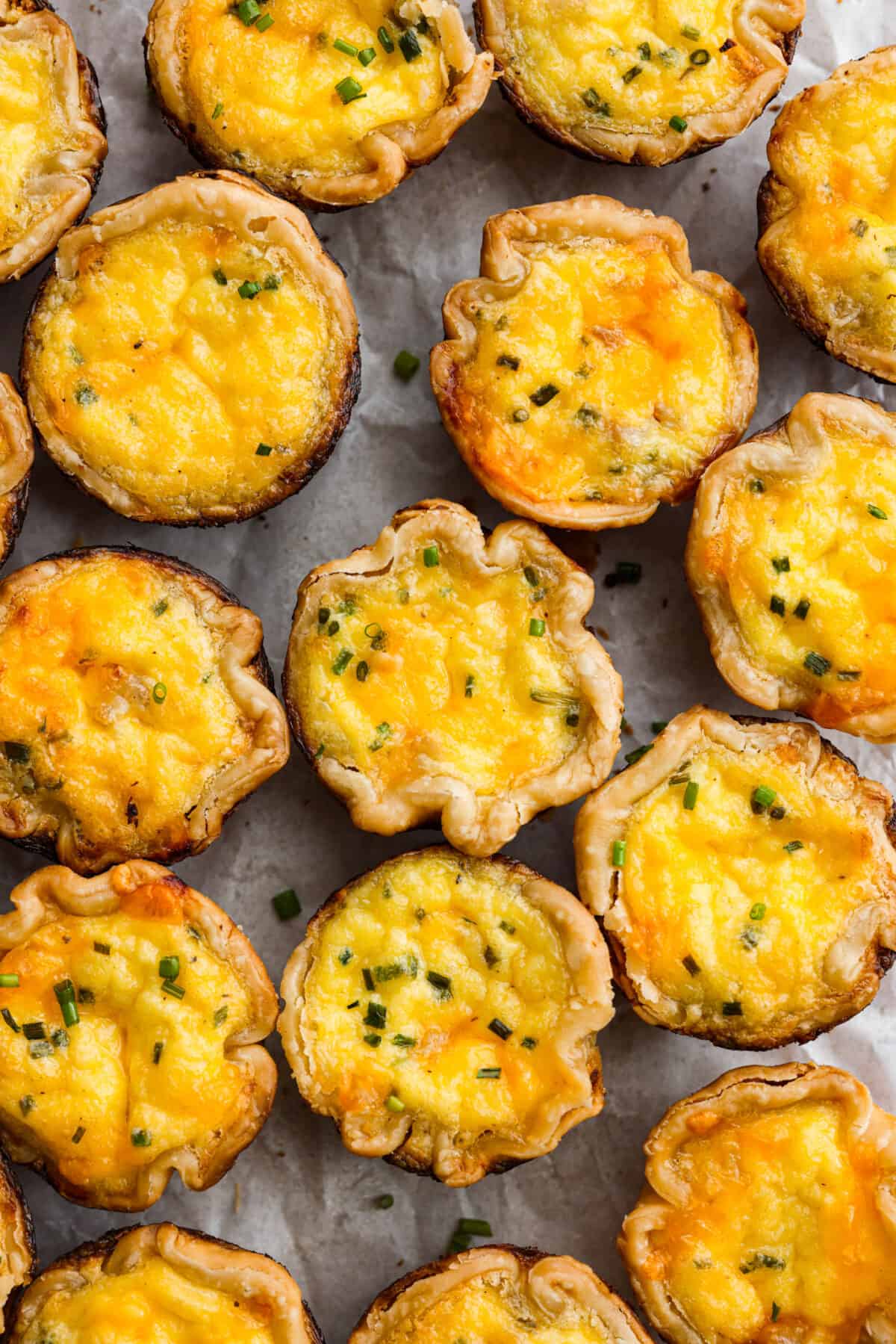
Storing & Reheating Leftovers
Mini quiche store great in the fridge or the freezer and still taste amazing reheated. Here are my tips for storing and reheating your leftovers:
- Make Ahead: These are one of the best prepare-ahead breakfast options. Keep them in an airtight container in the refrigerator for up to 5 days, or put them in a freezer ziplock or airtight container and freeze for up to 3 months.
- Reheating From Frozen: To reheat frozen quiches, place them at least 1 inch apart on a parchment-lined baking sheet and bake in the oven at 350 degrees Fahrenheit for 12-14 minutes. Air fry at 390 degrees Fahrenheit for 6-7 minutes. Heat in the microwave for 2-3 minutes.
- Reheating From Refrigerated: Bake in the oven at 350 degrees Fahrenheit for 8-10 minutes. Air fry at 390 degrees Fahrenheit for 3-4 minutes. Heat in the microwave for 1-2 minutes with the microwave set to 50% power.

More Egg Breakfast Recipes
Eggs are a popular breakfast, and for good reason! They can be made so many different ways and will keep you satisfied until lunch. Here are some of our family-favorite recipes that I know you’ll love too!
Pin this now to find it later
-
Preheat the oven to 350 degrees Fahrenheit and spray a 24-count mini muffin pan with pan spray.
-
Cut 24 2-inch circles from the pie crust, gathering the scraps and rolling it out again as needed to get all 24. Carefully press the pie crust circles into each well of the muffin pan. Don’t press them too hard, or they will be difficult to release. Also, be careful to not puncture the dough or your quiche will leak. Place the pan in the refrigerator to chill while you prepare the quiche mixture and add-ins.
-
In a medium bowl, use a whisk or an immersion blender to combine the eggs, cream, milk, salt, and pepper. Transfer to a large liquid measuring cup for easy pouring. You may also use a small ladle to fill the little wells, but a measuring cup is easier.
-
Remove the muffin pan from the refrigerator and add a little bit of each add-in filling to each of the wells. Fill the wells to the brim of the pie crust with the quiche mixture.
-
Bake for 30-35 minutes, until the edges of the pastry are beginning to brown. Once they are done, remove them from the oven and let them cool for 5-10 minutes. While they are still warm, carefully remove them from the pan. They should come out fairly easily, but if the egg mixture leaked at all, running the tip of a small paring knife around the edge can help loosen the quiche from the pan.
Calories: 127kcalCarbohydrates: 9gProtein: 3gFat: 9gSaturated Fat: 4gPolyunsaturated Fat: 1gMonounsaturated Fat: 3gTrans Fat: 0.002gCholesterol: 33mgSodium: 180mgPotassium: 45mgFiber: 0.4gSugar: 0.4gVitamin A: 170IUVitamin C: 0.1mgCalcium: 39mgIron: 1mg
Nutrition information is automatically calculated, so should only be used as an approximation.
